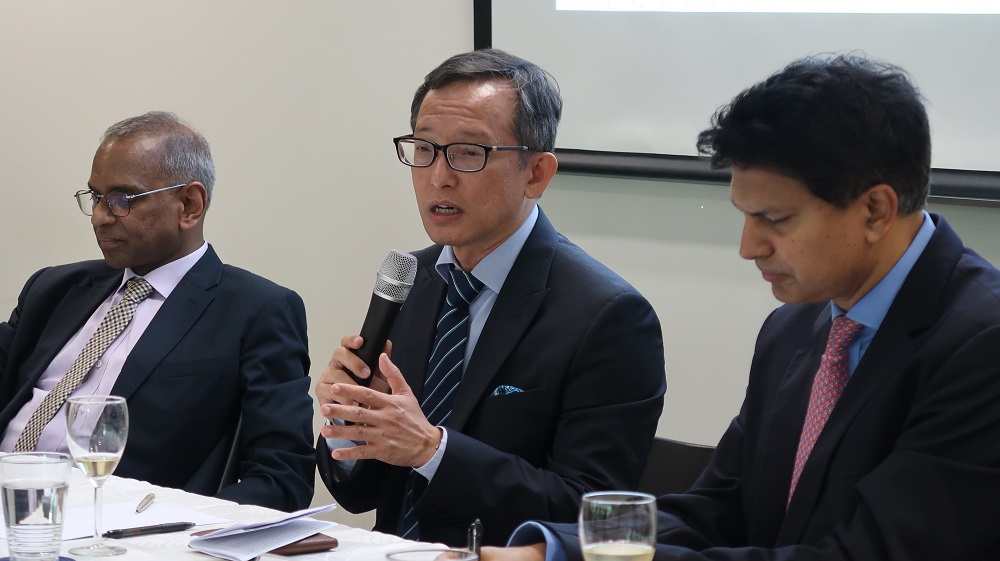ASEAN has a lot to look forward to in 2020, but there are also numerous risks. Even as trade volumes pick up, issues such as the US-China confrontation, a potential China slowdown and erratic US policies could jeopardise the region’s prospects. These topics and more came up during the SIIA Year Opener, an annual event where we discuss the outlook for the year ahead between the Western and Chinese New Years. This year, the talk was held on 22 January 2020, and featured Mr Manu Bhaskaran, Director and CEO of Centennial Asia Advisors, and Council Member of the SIIA; and Dr Taimur Baig, Managing Director and Chief Economist of DBS Bank.
The session was moderated by Associate Professor Simon Tay, Chairman of the SIIA. The EU Ambassador to Singapore, H.E. Barbara Plinkert delivered the opening address. Here’s a look at what came up during the discussion.

2020 Will Be a Better Year for ASEAN
Compared to 2019, ASEAN countries have much better growth prospects. Part of this is due to improvements in external conditions such as global demand. The Phase One trade deal between the US and China has reassured businesses, while expansionary monetary policies in countries such as Japan and the rebounding Chinese economy are expected to buoy demand. Both the electronics and auto sectors are seeing upswings, with demand for products such as semiconductors picking up since the start of 2020.
ASEAN countries will be given the fiscal space to pursue expansionary monetary policies and long term policies as external conditions ease. Indonesia could achieve President Joko Widodo’s long-held aim of 7% growth by 2022 if his ambitious reforms are successful. The Philippines will benefit from infrastructure development and supply side reforms, as well as the peace deal in mineral-rich Mindanao. Singapore, Malaysia and Thailand are also expected to benefit from a recovery in trade volumes and domestic expenditure.
Asia to the Forefront?
Beyond ASEAN, Asia as a whole is expected to impress onlookers in 2020. As Japan prepares to host the summer Olympics, it will demonstrate its sustainable practices with uniforms made of recycled material and fleets of green vehicles. China’s continued spending on innovation and renewables will increase its global recognition, while it will also take a more accommodative approach to host countries in the Belt and Road Initiative (BRI).
Risks Remain Relevant
However, the 2020 outlook is not entirely rosy. Political frictions in Malaysia and Thailand could damage their outlook if unrest leads to violence. Similarly, while Vietnam has benefitted from manufacturing relocations, its policy direction and future prosperity could hinge on the outcome of the 13th Party Congress in 2021.
Concerns about the Wuhan virus are rising, while the possibility of Chinese credit defaults remains real as some companies remain in genuine distress.
Looking beyond Asia, there are worrying trends. US President Donald Trump’s assassination of Iranian General Qasem Soleimani violated an important convention of interstate behaviour, while his government’s vetoing of new judges to the World Trade Organisation’s appellate body has removed an important avenue of recourse for small countries in trade disputes. As the US election trail progresses, one also cannot rule out the chance of more rash actions from Trump with direct ramifications for ASEAN.





